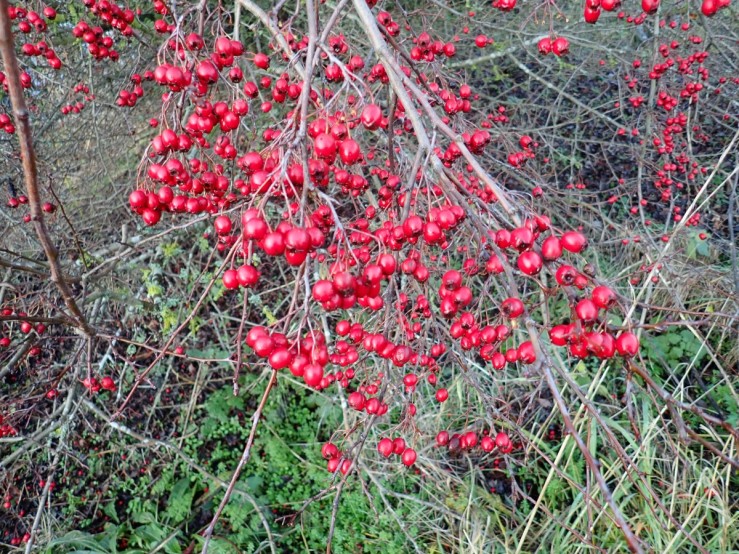
This Hawthorn bush was still covered in fruit. According to The Woodland Trust:
Common hawthorn can support more than 300 insects. It is the foodplant for caterpillars of many moths, including the hawthorn, orchard ermine, pear leaf blister, rhomboid tortrix, light emerald, lackey, vapourer, fruitlet mining tortrix, small eggar and lappet moths. It provides nectar and pollen for bees and other pollinating insects. The haws are rich in antioxidants and are eaten by many migrating birds such as redwings, fieldfares and thrushes, as well as small mammals. The dense thorny foliage makes a good nesting shelter for many species of bird.
An example of Ramalina fraxinea growing on an Ash tree. I was surprised to find it here at Big Waters among abundant Xanthoria polycarpa.
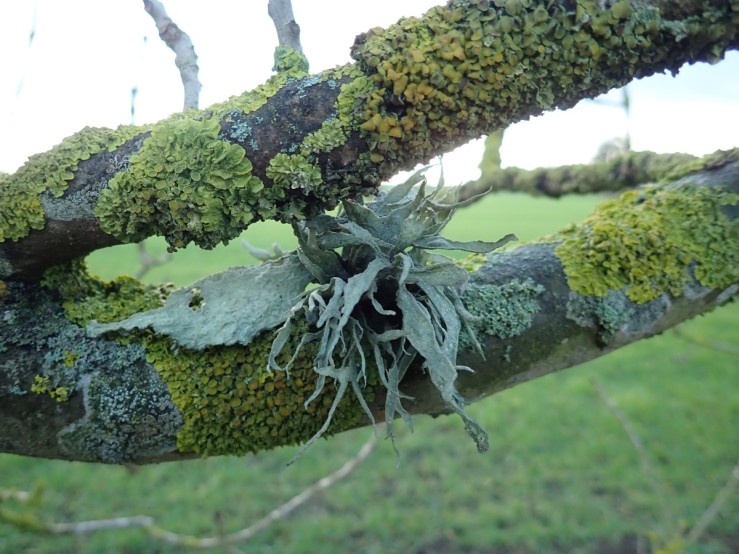
On the same trees Ramalina fastigiata was flourishing and R farinacea was present but less spectacular. All of these like well lit nutrient enriched bark.
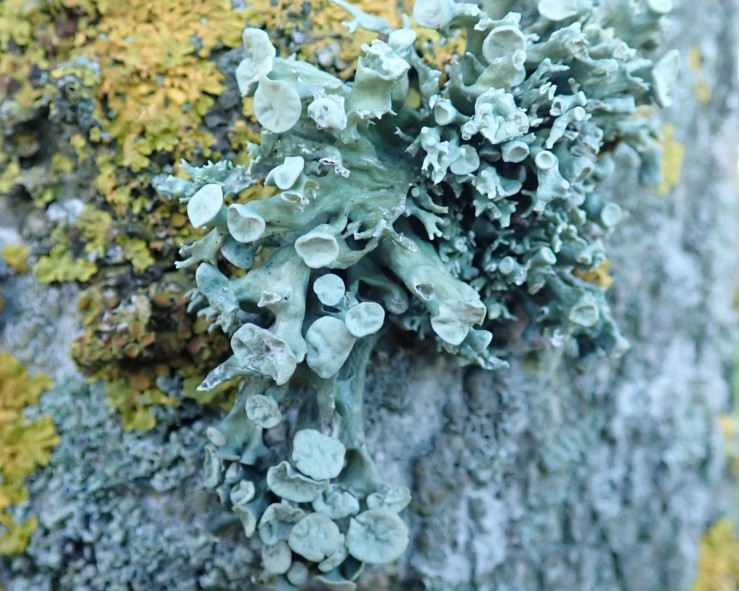
Lichen often forms mosaics on tree trunks. Lecidella elaeochroma is lined by a black prothallus separating it from Lecanora chlarotera with the buff apothecia.
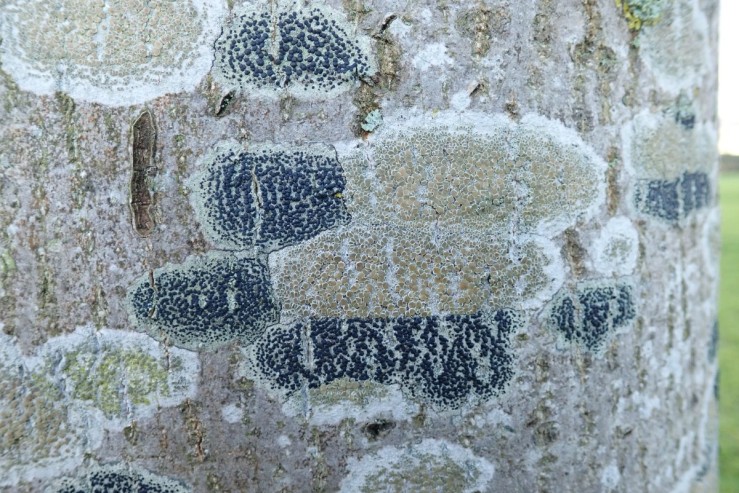
The green Lichen with the large black apothecia is Physcia aipolia.
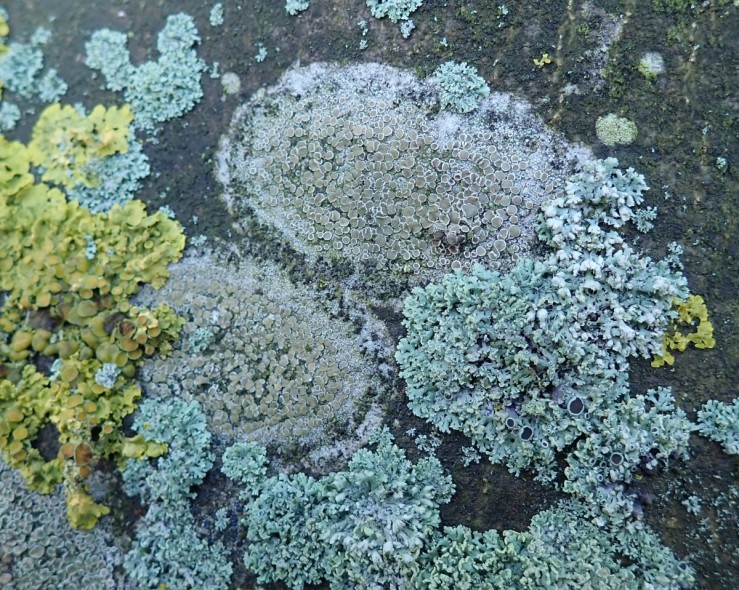
Another common physcia pictured below looks like P caesia.
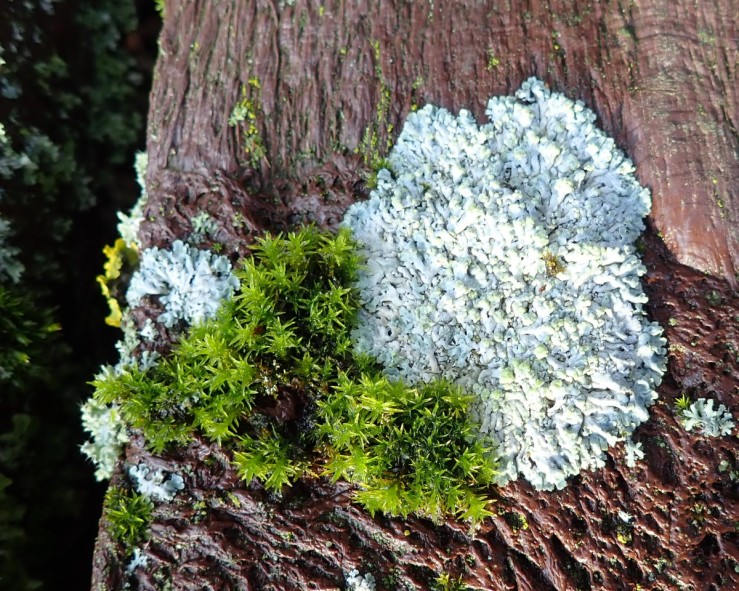
The bryophyte on the picture above and below is Orthotrichum diaphanum. It had silvery leaf tips.
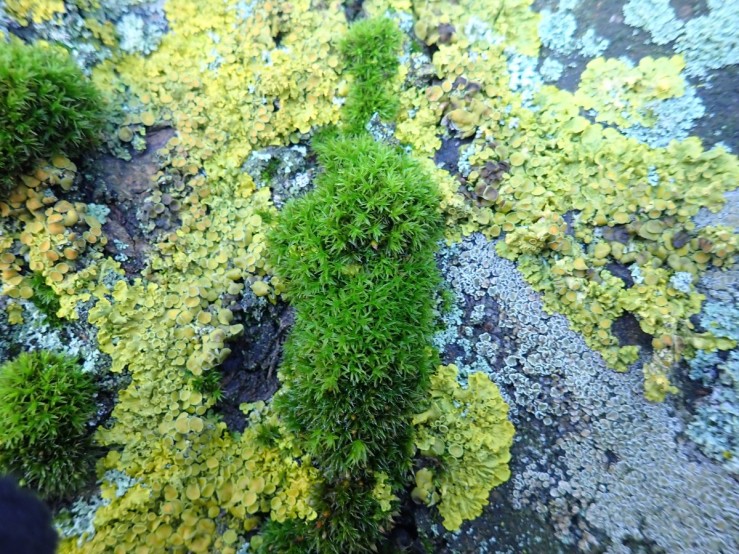
In the nature reserve Jelly Ear fungus (Auricularia auricula-judae) sprouting from Elder.
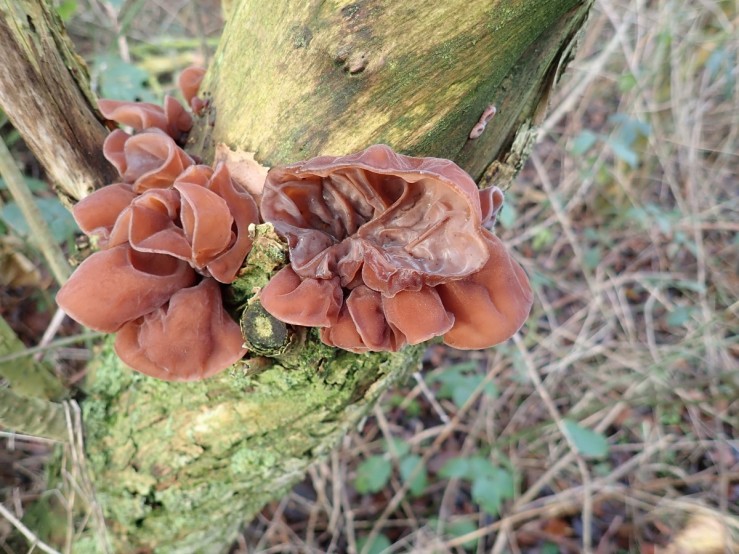
The fungi below, festooning the fallen log is Stereum hirsutum.
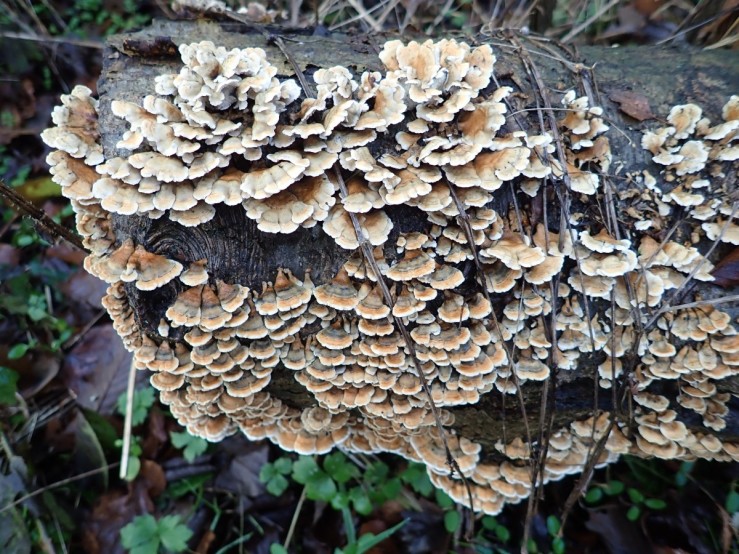
Not all fungi are easy to identify. It is late in the year. so it is possible that this violet stiped gilled mushroom is a Wood Blewit (Lepista nuda). It will fruit until December.
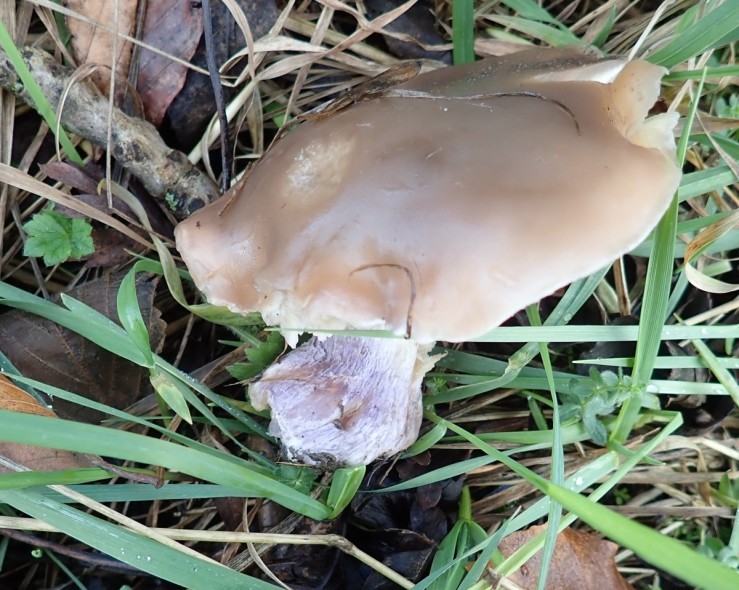
References: